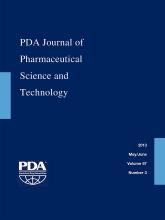Abstract
Clinicians have had concerns about particulate matter contamination of injectable drug products since the development of the earliest intravenous therapeutics. All parenteral products contain particulate matter, and particulate matter contamination still has the potential to cause harm to patients. With tens of millions of doses of injectable drug products administered in the United States each year, it is critical to understand the types and sources of particulate matter that contaminate injectable drug products, the possible effects of injected particulate matter on patients, and the current state of regulations and standards related to particulate matter in injectable drug products. Today, the goal of manufacturers, regulators, and standards-setting organizations should be to continue to minimize the risk of particle-induced sequelae, especially in high-risk patients, without trading unnecessary manufacturing burden for minimal safety gains.
LAY ABSTRACT: All injectable drug products are contaminated with some level of solid particulate matter, including, for example, fibers, dust, rubber, and silicone. These materials enter drug products primarily during the manufacturing process. The possible effects on patients of injectable drug products containing particulate matter depend on a number of factors. However, given the large number of patients receiving injectable drug products each year in the United States and the potential for particulate matter to cause harm to patients, it is critical to continue to minimize particulate matter contamination in injectable drug products. Manufacturing standards and regulations have helped improve manufacturing quality. Nevertheless, manufacturers, regulators, and standards-setting organizations must continue to work toward improving manufacturing quality and minimizing the risk of harm from particle contamination, especially in high-risk patients.
- Injectable
- Parenteral
- Particulate matter
- Pharmaceutical quality
- Current good manufacturing practice (cGMP)
- © PDA, Inc. 2013
PDA members receive access to all articles published in the current year and previous volume year. Institutional subscribers received access to all content. Log in below to receive access to this article if you are either of these.
If you are neither or you are a PDA member trying to access an article outside of your membership license, then you must purchase access to this article (below). If you do not have a username or password for JPST, you will be required to create an account prior to purchasing.
Full issue PDFs are for PDA members only.
Note to pda.org users
The PDA and PDA bookstore websites (www.pda.org and www.pda.org/bookstore) are separate websites from the PDA JPST website. When you first join PDA, your initial UserID and Password are sent to HighWirePress to create your PDA JPST account. Subsequent UserrID and Password changes required at the PDA websites will not pass on to PDA JPST and vice versa. If you forget your PDA JPST UserID and/or Password, you can request help to retrieve UserID and reset Password below.






